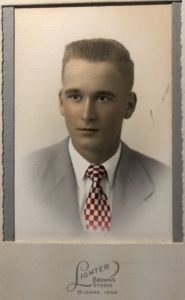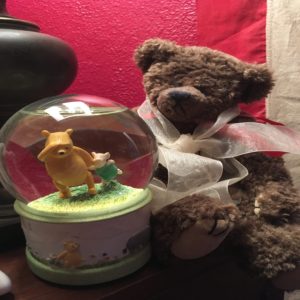When you look at a person, what do you see?
 My twins Annie and Emma are not quite 4 years old on this Saturday morning in 2004. The three of us are at a Home Depot in Chandler, AZ. We round a corner in the back of the store when I look toward the far end of the aisle. Rolling toward us, dressed in boots, jeans, a western shirt and cowboy hat is a paraplegic man in a wheelchair. Before I can say anything, the girls bolt toward him. It looks like the three of them will meet in the middle by the PVC and sprinkler system parts.
My twins Annie and Emma are not quite 4 years old on this Saturday morning in 2004. The three of us are at a Home Depot in Chandler, AZ. We round a corner in the back of the store when I look toward the far end of the aisle. Rolling toward us, dressed in boots, jeans, a western shirt and cowboy hat is a paraplegic man in a wheelchair. Before I can say anything, the girls bolt toward him. It looks like the three of them will meet in the middle by the PVC and sprinkler system parts.
It’s just the four of us in the aisle. I can’t yell them back without making the cowboy feel like I’m waving my kids away from him. I’ve yet to have a talk with the girls about being tactful in situations like this, what to say and what not to say. As if a 4-year old would understand anyway. It’s one of those parenting moments where you bite your lip and hope for the best.
They do meet in the middle. Annie and Emma apply their brakes directly in front of the cowboy, forcing him to stop. I’m bracing for what’s about to happen, running a list of potential apologies through my brain.
It’s a three second stand off that feels like eternity.
With a Texas size wave of the arm and a voice to match, Annie shouts, “Howdy, partner!”
I saw the wheelchair.
Annie saw the cowboy.
When you look at a person, what do you see?
Cowboy hats. Leather vests. Flip flops. Faded concert T-shirts. Silk ties. Sun dresses. Tattoos. Glasses. Piercings. Jeans. Evening gowns. Designer shoes. Yoga pants. Board shorts. Three-piece suits. Baseball caps. Hawaiian shirts. Team jerseys. Scars. There’s so much to look at on the outside. Some of it interesting and some non descript. None of it a complete picture of the person wearing them or bearing them.
The danger is to assume what we see is what it is. Or what we think it represents. We know this to be true. It’s why we check ourselves in the mirror before walking out the door. It’s why we spend time pondering what to wear. Because we know those who see us will assume what they see is who we are. It’s why we don’t stop with clothes and extend the assumption to the cars we drive, the homes we live in and the vacations we take.
Yet we are each one more, much more, than our layer of clothing choice. Or our vehicle or neighborhood. As a means of determining who we are, all of these are misleading. And incomplete. There’s only one common denominator on which we should focus.
We are, each and every one, made in the image of God.
Imago Dei.
The Bible tells us, “God created man in His own image, male and female He created them, in His image He created them.” (Genesis 1:27) When we look past the clothes and the cars and the houses we live in, we see what matters. We are each one a reflection of God’s image. It’s the only way to accurately view another human being.
When we push through the trappings, we discover the truth. The awe inspiring, reverent truth that the person we’re standing in front of is made in the image of God.
Next time you’re in Home Depot, don’t be like me. Be like Annie. See the cowboy, not the wheelchair. And while you’re at it, see the plumber. The retired guy. The mom with three kids. The punk rocker wannabe. The orange apron girl. The carpenter. The preppie college kid. The business executive.
Each of them bearing the image of God.
“It is a serious thing to live in a society of possible gods and goddesses, to remember that the dullest and most uninteresting person you talk to may one day be a creature which, if you saw it now, you would be strongly tempted to worship, or else a horror and a corruption such as you now meet, if at all, only in a nightmare. All day long we are, in some degree, helping each other to one or other of these destinations. It is in the light of these overwhelming possibilities, it is with the awe and the circumspection proper to them, that we should conduct all our dealings with one another, all friendships, all loves, all play, all politics. There are no ‘ordinary’ people. You have never talked to a mere mortal. Nations, cultures, arts, civilizations — these are mortal, and their life is to ours as the life of a gnat. But it is immortals whom we joke with, work with, marry, snub and exploit — immortal horrors or everlasting splendors.”
– C. S. Lewis, from “The Weight of Glory”
Todd A. Thompson – April 27, 2014



